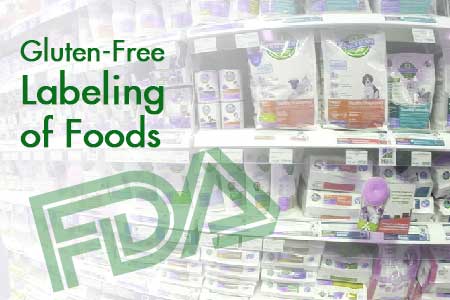An estimated 3 million people in the United States have celiac disease. In people with celiac disease, foods that contain gluten trigger production of antibodies that attack and damage the lining of the small intestine. Such damage limits the ability of celiac disease patients to absorb nutrients and puts them at risk of other very serious health problems, including nutritional deficiencies, osteoporosis, growth retardation, infertility, miscarriages, short stature, and intestinal cancers.
On November 18, 2015, the Food and Drug Administration published a proposed rule in the Federal Register to establish requirements for fermented, hydrolyzed, and distilled foods or ingredients that are labeled as “gluten-free.” FDA proposed to amend regulations on gluten-free labeling of food in title 21 of the Code of Federal Regulations (21 CFR), section 101.91, to establish compliance methods for these types of foods that bear a voluntary “gluten-free” labeling claim. In the August 5, 2013 final rule, FDA established section 101.91 to define the term “gluten-free” for voluntary use in the labeling of foods. However, the final rule identified uncertainty with the compliance methods established in the final rule for fermented, hydrolyzed, or distilled foods or ingredients.
How the FDA defines “gluten free”?
Such products that are inherently gluten-free or they do not include any of the following:
- Ingredients that are gluten-containing grains.
- Ingredients derived from a gluten-containing grain that have not been processed to remove gluten.
- Ingredients derived from a gluten-containing grain that have been processed to remove gluten if use of that ingredient results in the presence of 20 parts per million (ppm) or more gluten in the food.
In either case, any unavoidable presence of gluten must be less than 20 ppm.


